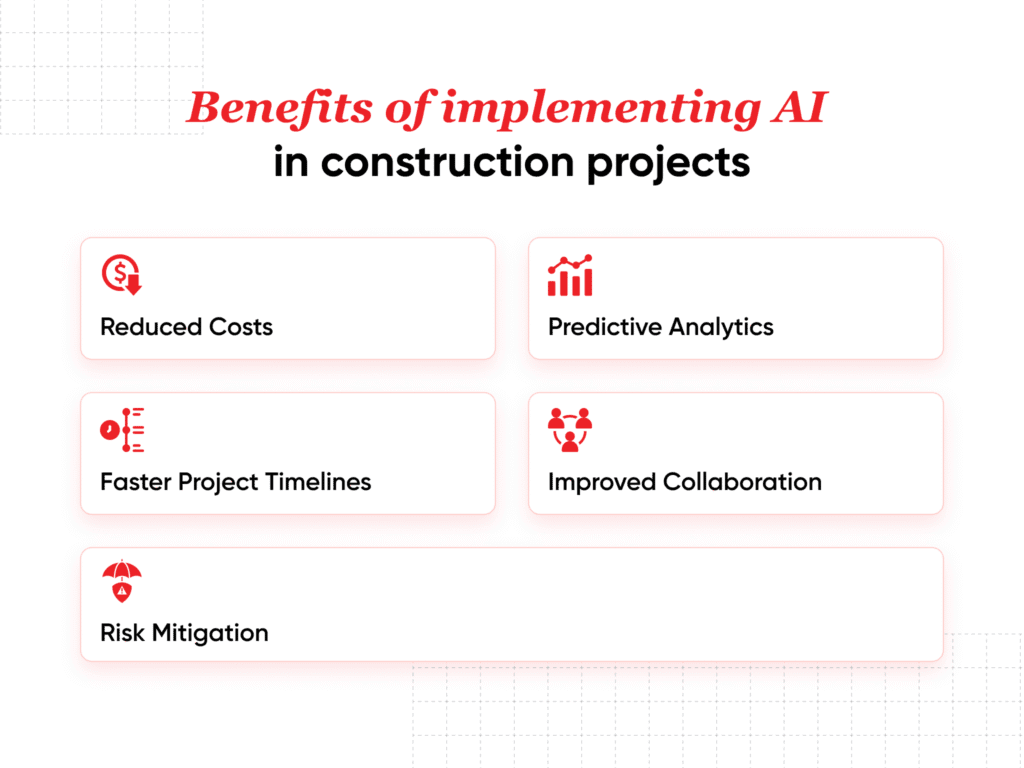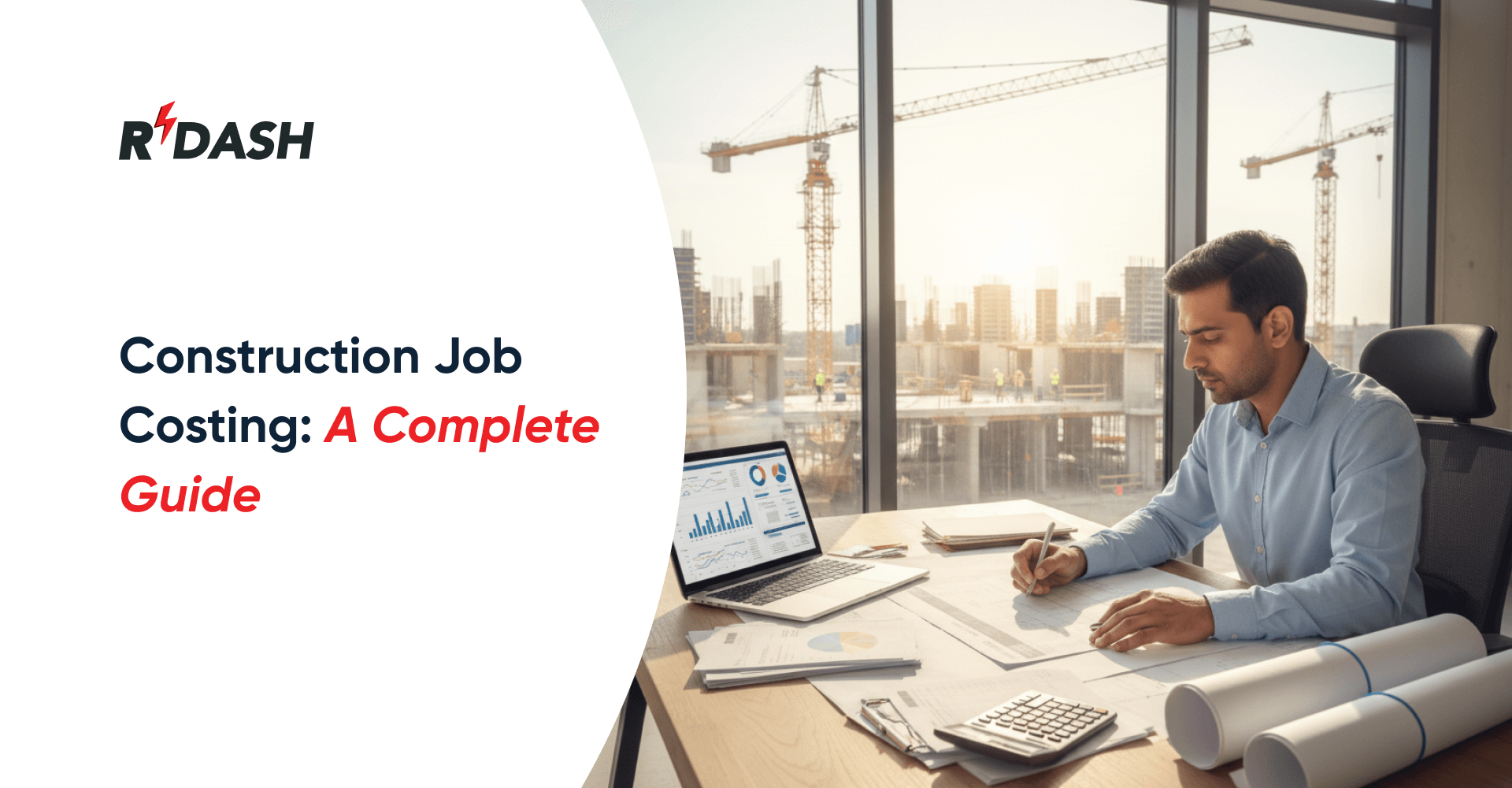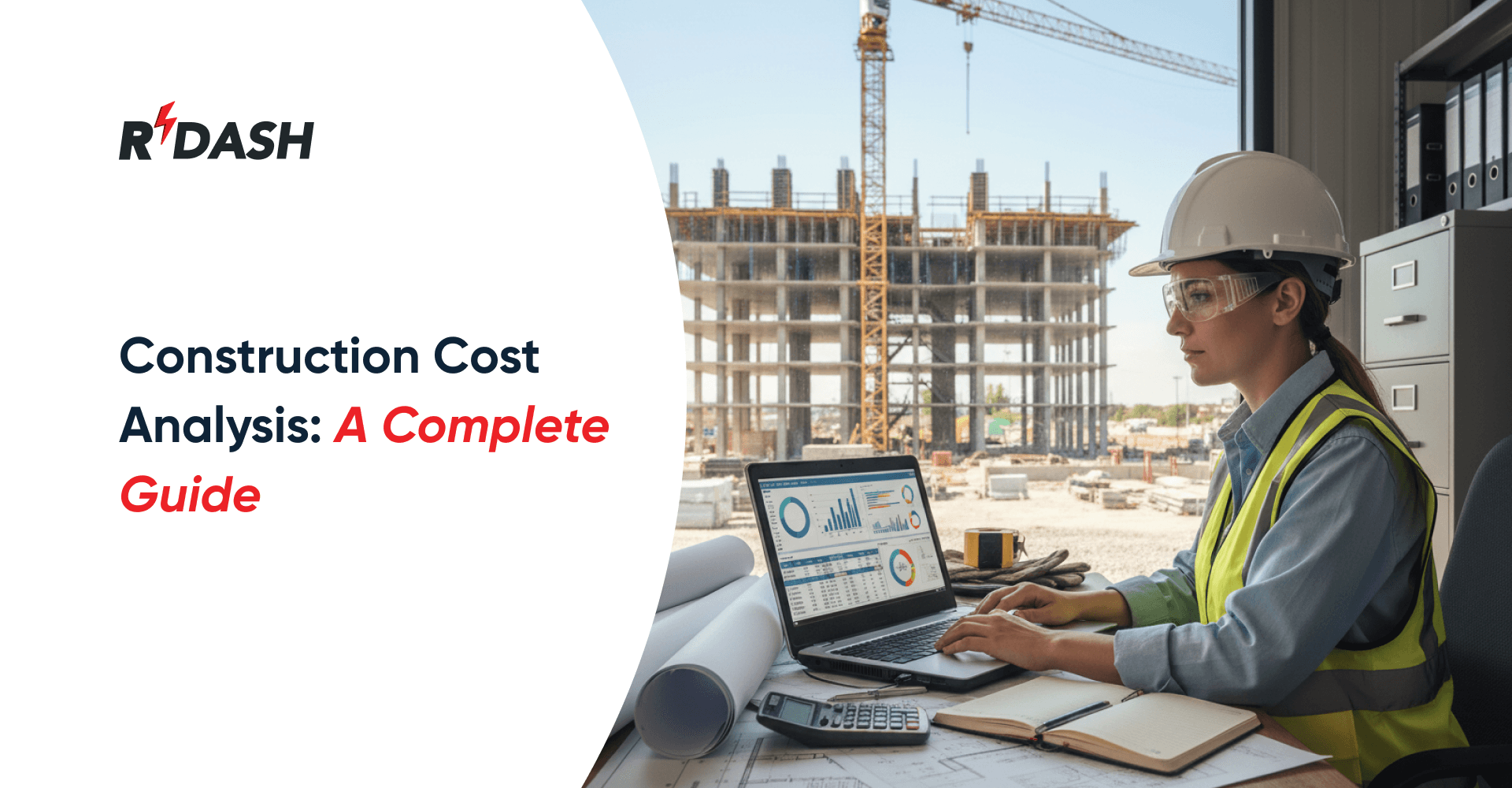What is AI in construction?
Artificial intelligence (AI) in construction covers a wide range of digital tools, from machine learning software to automated machines, all designed to modernize the way construction projects are executed.
These technologies help streamline tasks, support smarter decision-making, and improve productivity from the design phase to on-site work and facility upkeep.
The use of AI in construction traces back to early digital developments. In the 1960s, the introduction of computer-aided design (CAD) helped make construction planning more efficient. By the 1980s, tools like computer-aided manufacturing (CAM) and CNC machines started automating the creation of building parts, improving speed and precision.
In the early 2000s, researchers introduced machine learning into construction, using it to forecast equipment issues and monitor repairs, marking one of the first practical uses of AI in the field.
Today, the adoption of AI in construction is growing rapidly. Automated machines and robots are now handling tasks like bricklaying and painting, which helps lower labor costs and speed up project timelines. Smart algorithms also monitor job sites in real time to catch safety risks, design problems, and delays, allowing teams to act early and avoid bigger issues.
AI in construction industry use cases
Preconstruction
In the early planning stages, AI helps streamline everything from design and contractor selection to risk evaluation and permitting. AI tools can assess a project’s feasibility by studying financial projections, market conditions, and environmental impact. It can also assist in selecting the right materials based on factors like cost and durability.
For design work, AI-powered image recognition can scan construction drawings to identify elements like walls, doors, and windows. It can then help estimate costs more efficiently, tasks that used to be done manually and were often error-prone. While these tools speed up work, it’s still essential for project managers to review and verify AI-generated estimates for accuracy.
Construction
During the building phase, AI makes it easier to predict and avoid potential delays. For example, predictive tools can flag upcoming supply chain issues or alert teams when machinery might need servicing. This helps reduce breakdowns and downtime.
AI-powered drones monitor job sites from the air, identifying safety risks and tracking project progress. AI also uses Building Information Modeling (BIM) data to suggest the best order of tasks, improving efficiency. With a central platform to manage project data, AI enhances communication by giving stakeholders real-time updates and insights that keep everyone aligned.
Postconstruction
Even after the project ends, AI continues to add value. Predictive maintenance tools monitor building systems and equipment to forecast wear and tear, allowing teams to fix issues before they grow. AI tools can also monitor energy consumption across systems like lighting and HVAC, providing suggestions to help cut down on expenses and environmental impact. These tools also help teams review past project performance to improve how future projects are managed.
What are the common barriers to implementing AI in construction?
Using AI in construction can offer many advantages, but there are also some obstacles to consider. Here are some of the common barriers:

High Initial Cost
Many construction companies hesitate to adopt AI because the upfront investment can be expensive. Buying new software, upgrading systems, and training staff all require a good amount of money.
Lack of Skilled Professionals
AI tools need people who know how to use them. Unfortunately, many construction teams don’t have experts who understand AI, data analysis, or machine learning. This makes it harder to use the technology effectively.
Resistance to Change
The construction industry has typically been cautious when it comes to trying new technologies. Some workers and managers prefer sticking to old methods because they are familiar and feel safer. This mindset can stop companies from trying out new tools.
Data Management Issues
AI needs good-quality data to work properly. If a company has incomplete, outdated, or unorganized data, AI systems may not give useful results. Many firms also struggle with collecting and storing data in the right way.
Privacy and Security Concerns
As AI deals with large amounts of data, companies worry about data privacy and cyber threats. They want to make sure sensitive project or client information stays protected.
Overcoming these barriers requires proper planning, training, and a clear understanding of how AI can help improve business operations. Starting small and scaling up over time is often a good way to begin the journey.
What are the key benefits of implementing AI in construction projects?
Using artificial intelligence (AI) in construction projects offers many advantages. Here are some of the main benefits:

- Reduced Costs
AI helps spot waste, avoid rework, and improve planning, leading to better budget control and lower overall project costs. - Faster Project Timelines
By automating repetitive tasks and improving scheduling, AI helps projects move faster and stay on track. - Risk Mitigation
AI tools can predict possible delays or cost overruns. By identifying these early, teams can take action before problems grow. - Predictive Analytics
AI looks at past and current data to forecast future issues. AI helps teams make smarter decisions and reduces the chances of unexpected issues during the project. - Improved Collaboration
AI-powered platforms allow teams to share updates, documents, and progress in real time. This keeps everyone informed and working together smoothly, even across multiple locations.






